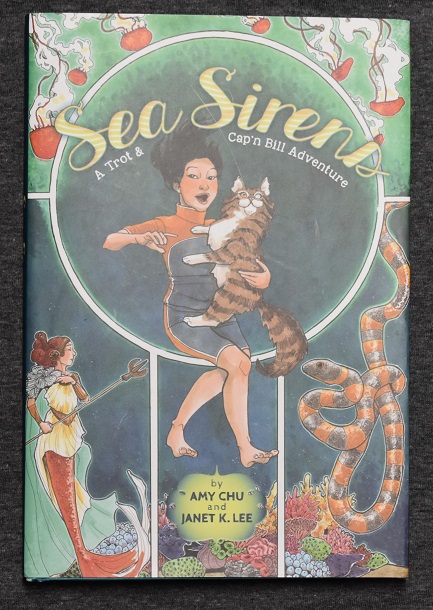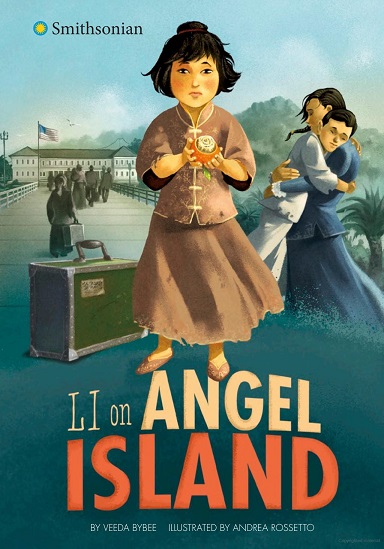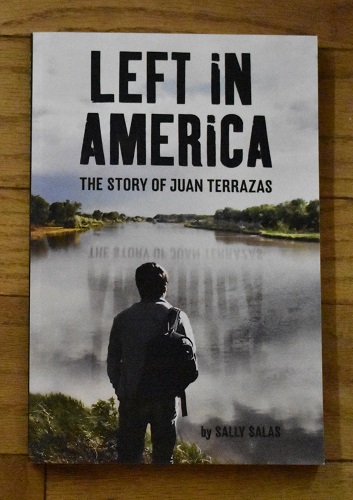Sea Sirens: A Trot & Cap’n Bill Adventure (#1) by Amy Chu and Janet K. Lee, with lettering by Jimmy Gownley.
Viking, Penguin Random House, New York, 2019.
Middle grade graphic novel, 144 pages.
Lexile: 240L .
AR Level: 2.5 (worth 1.0 points) .
Vietnamese American Trot and her cranky one-eyed rescue cat spend a lot of time surfing at the beach where they mutually babysit her grandpa (he has dementia, she’s not quite old enough to be left alone yet). One day, she sneaks out to catch a wave and wipes out so badly they end up in an underwater world. At first she’s happy to avoid her mother’s rules, but after landing in an undersea war, will Trot and Cap’n Bill ever get home again?

I had no clue what to expect when we first got these. Even the blurb does little to explain the awesomeness of Cap’n Bill (turns out cats can talk, we just don’t listen well). The realistic part of the story is also hard-hitting; Trot and Grandpa are grounded because one day she forgot to keep an eye out while surfing and he wandered away from his fishing resulting in a Silver Alert.
Continue reading “Graphic Novel Review: Sea Sirens”







